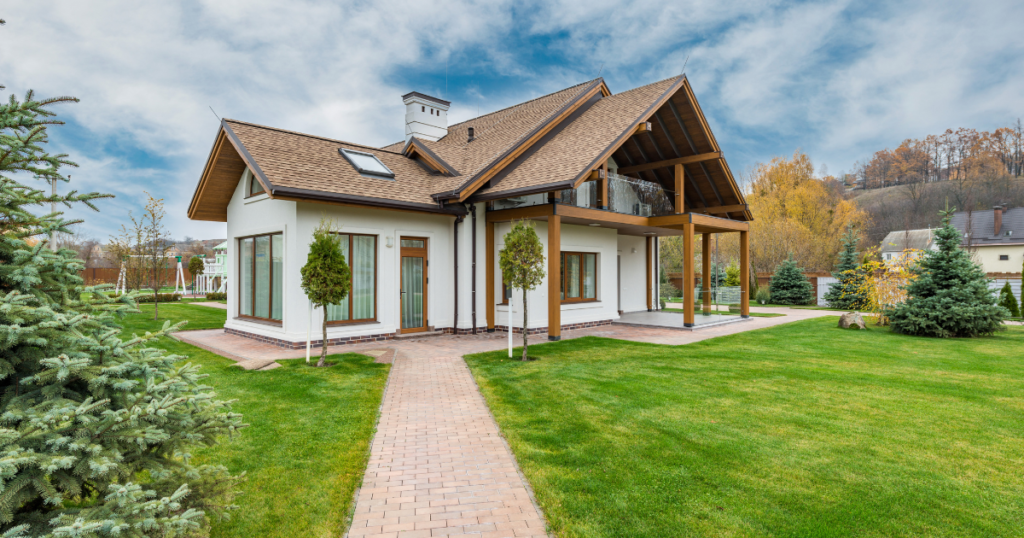A Guide to Sustainable and Eco-Friendly Home Design
In today’s world, sustainable and eco-friendly home design has become more than just a trend—it’s a necessity. With increasing awareness of environmental issues, homeowners are seeking ways to reduce their carbon footprint, lower energy consumption, and create healthier living spaces. This guide explores sustainable home design practices, materials, and technologies that can help you build or remodel a home with minimal environmental impact.

Understanding Sustainable Home Design
Sustainable home design focuses on creating spaces that are energy-efficient, resource-conscious, and environmentally friendly. The goal is to reduce the negative impact on the planet while improving the quality of life for the occupants. This can be achieved through various approaches, from choosing eco-friendly materials to incorporating renewable energy sources.
Key Principles of Sustainable Home Design
- Energy Efficiency
- Reducing energy consumption is a cornerstone of sustainable home design. This involves using energy-efficient appliances, optimizing insulation, and utilizing natural light to minimize the need for artificial lighting and heating.
- Water Conservation
- Implementing water-saving fixtures, rainwater harvesting systems, and greywater recycling can significantly reduce water usage in a home.
- Resource Efficiency
- Using sustainable, locally sourced, and recycled materials in construction reduces the demand for new resources and lowers the environmental impact of manufacturing and transportation.
- Indoor Environmental Quality
- Improving indoor air quality through ventilation systems, non-toxic building materials, and humidity control creates a healthier living environment.
- Site Consideration
- Designing homes that harmonize with their natural surroundings and minimize disruption to local ecosystems is essential for sustainability.
Sustainable Materials for Eco-Friendly Homes
The materials you choose for your home have a significant impact on its overall sustainability. Opting for eco-friendly, durable, and renewable materials can reduce the environmental footprint of your home.
1. Recycled and Reclaimed Materials
Using recycled or reclaimed materials in construction is an excellent way to minimize waste and reduce the need for new resources. Examples include reclaimed wood, recycled metal, and repurposed bricks.
2. Sustainable Wood
When using wood in construction, choose certified sustainable options, such as those with Forest Stewardship Council (FSC) certification. Bamboo is another popular sustainable alternative, known for its rapid growth and durability.
3. Low-VOC Paints and Finishes
Volatile Organic Compounds (VOCs) are harmful chemicals found in many conventional paints and finishes. Opting for low-VOC or zero-VOC products reduces indoor air pollution and creates a healthier living environment.
4. Insulation Materials
Insulation is crucial for energy efficiency, but some insulation materials can be harmful to the environment. Choose eco-friendly options like cellulose, made from recycled paper, or sheep’s wool, which is a natural, renewable resource.
5. Eco-Friendly Flooring
Sustainable flooring options include bamboo, cork, and reclaimed wood. These materials are not only environmentally friendly but also durable and aesthetically pleasing.

Technologies for Sustainable Home Design
Incorporating modern technologies can enhance the sustainability of your home by optimizing energy use, improving efficiency, and reducing waste.
1. Solar Power
Installing solar panels allows you to harness the sun’s energy to power your home, reducing reliance on fossil fuels and lowering energy bills. Solar power systems can be scaled to meet the specific energy needs of your home.
2. Geothermal Heating and Cooling
Geothermal systems use the earth’s stable temperature to heat and cool your home efficiently. This technology reduces energy consumption and can significantly lower your carbon footprint.
3. Smart Home Systems
Smart home technologies enable more efficient energy management. For example, smart thermostats can learn your schedule and adjust heating and cooling to save energy, while smart lighting systems reduce unnecessary electricity use.
4. Rainwater Harvesting
Rainwater harvesting systems collect and store rainwater for use in irrigation, flushing toilets, and other non-potable applications. This reduces the demand for treated water and conserves a valuable natural resource.
5. Green Roofing
Green roofs, covered with vegetation, provide natural insulation, reduce stormwater runoff, and improve air quality. They also create additional green space, which can be particularly beneficial in urban areas.
Sustainable Design Practices
In addition to materials and technologies, sustainable design practices play a crucial role in creating eco-friendly homes.
1. Passive Solar Design
Passive solar design takes advantage of the sun’s natural energy to heat and cool a home. By strategically placing windows, selecting appropriate materials, and designing the home’s layout, you can maximize solar gain in the winter and minimize it in the summer.
2. Natural Ventilation
Incorporating natural ventilation into your home design reduces the need for mechanical cooling systems. This can be achieved through the placement of windows, vents, and open floor plans that promote airflow.
3. Compact and Efficient Layouts
Smaller, well-designed spaces can be more energy-efficient and resource-conscious than larger homes. By optimizing space and minimizing unnecessary square footage, you can create a more sustainable living environment.
4. Landscaping with Native Plants
Using native plants in landscaping reduces the need for water, fertilizers, and pesticides, as these plants are naturally adapted to the local environment. This promotes biodiversity and supports local ecosystems.
5. Sustainable Construction Techniques
Building methods such as prefabrication, modular construction, and using local labor can reduce waste, lower transportation emissions, and improve the overall sustainability of the construction process.
Conclusion
Sustainable and eco-friendly home design is about more than just reducing your environmental impact—it’s about creating a healthier, more efficient, and comfortable living space. By choosing sustainable materials, incorporating energy-efficient technologies, and embracing eco-friendly design practices, you can contribute to a greener future while enjoying the benefits of a modern, thoughtfully designed home. Start exploring your options today to create a home that aligns with your values and supports a sustainable lifestyle.
